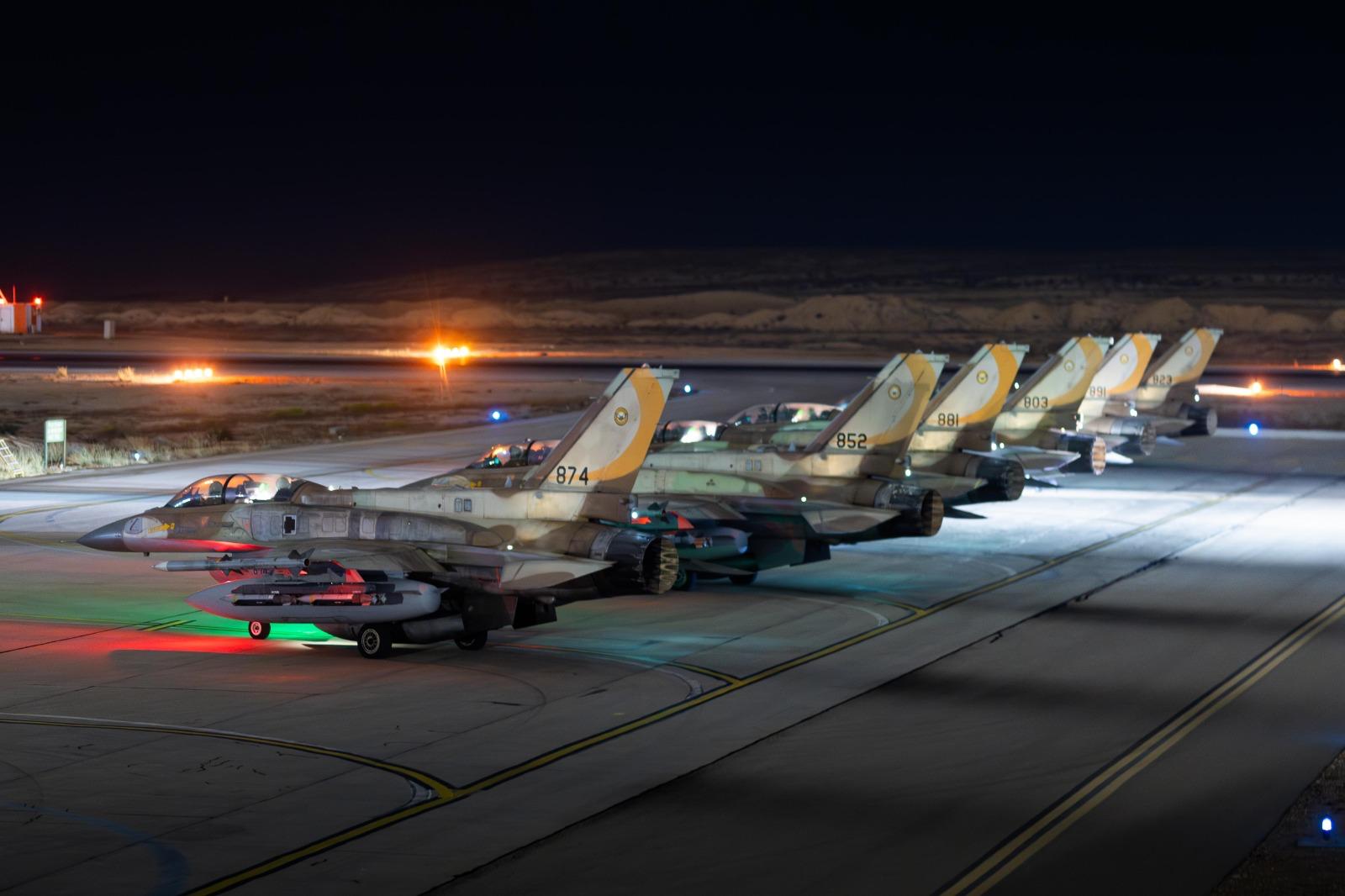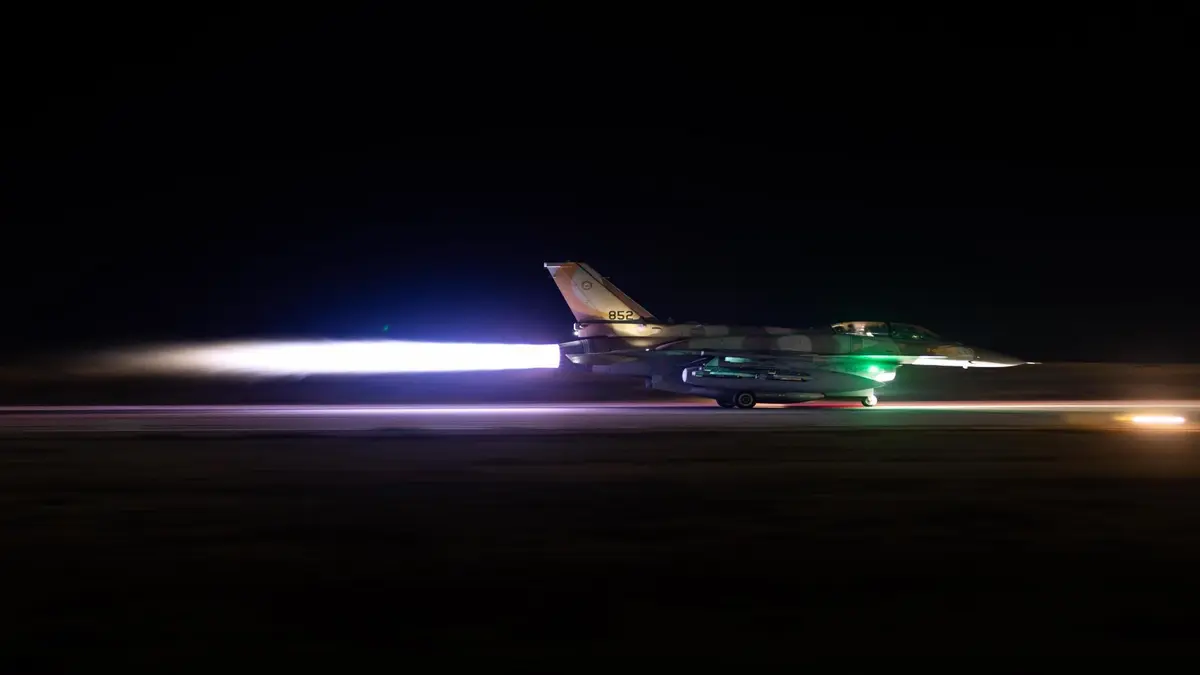Israeli airstrikes and targeted operations
Israeli warplanes conducted several flights into Iranian territory overnight, focusing on facilities supporting Iran’s missile program and nuclear development. According to Reuters and the AP, key locations included the Natanz uranium enrichment facility, the Parchin military complex and the Fordow fuel enrichment plant. The International Atomic Energy Agency (IAEA) confirmed that underground infrastructure at Natanz had been significantly damaged, with an estimated 10,000 centrifuges taken offline.
Military sources reported that the Israelis had used long-range precision-guided munitions, deep-penetration bombs and drone swarms. “We are focusing on reducing Iran’s strike capabilities and delaying its nuclear breakout timeline,” a senior IDF official said.

- Israeli Air Force Operations – YouTube
Iranian Missile Response and Impact on Israeli Territory
In response, Iran launched more than 370 ballistic missiles and armed drones targeting strategic sites in Tel Aviv, Haifa, and the Negev Desert. Iranian state media claimed that the missiles were aimed at “Zionist military installations,” although most of the weapons were intercepted by Israel’s layered air defense network, including Iron Dome, David’s Sling, and Arrow batteries.
Some missiles penetrated defenses, causing structural damage in Haifa and limited casualties. The U.S. military confirmed that naval assets stationed in the eastern Mediterranean provide deterrent support under regional security agreements.
Damage assessment and civilian casualties
Israeli officials have reported 24 deaths since the conflict began, including civilians killed by debris from intercepted drones. In Iran, more than 220 deaths have been confirmed, with most of the deaths occurring near targeted military facilities and in densely populated areas around Tehran and Isfahan. The IRIB state broadcasting complex in Tehran was reportedly heavily damaged by an Israeli airstrike, temporarily shutting down national news broadcasts.
Minor shockwave damage was reported at U.S. embassy facilities in Tel Aviv, although no American personnel were injured.
Leaders’ statements and global response
Speaking from the G7 summit in Quebec, US President Donald Trump warned Tehran against further escalation:
“Iran must completely abandon its nuclear ambitions. This is not the time for half measures.”
He also urged citizens in Tehran to evacuate “immediately” if possible, citing possible future attacks.
Israeli Prime Minister Benjamin Netanyahu reiterated his government’s position:
“We will do whatever is necessary to ensure that Iran cannot threaten our existence. This campaign will continue until that goal is secured.”
Supreme Leader Ayatollah Ali Khamenei condemned Western “interference” in a televised address and vowed continued resistance:
“The Islamic Republic will respond to every aggression with decisive force. Our people are united in confronting this attack.”
Meanwhile, G7 leaders issued a joint statement supporting Israel’s right to self-defense, while calling for diplomatic restraint to prevent a wider regional war.
Strategic Analysis
The ongoing strikes and counter-strikes demonstrate a clear strategic edge for Israel in the air, with its advanced strike aircraft and multi-layered defense systems proving highly effective. Iran’s missile and drone attacks – though massive – have so far had relatively little impact on Israeli infrastructure, largely due to successful interception rates and dispersal strategies.
However, the conflict is pushing both countries towards a long-term military exchange with significant civilian consequences. The attacks on Iran’s nuclear infrastructure and the symbolic damage inflicted on state institutions suggest that Israel is not simply seeking revenge but is trying to reset the strategic balance in the region.
For now, the U.S. The forces are in a supporting but non-combat role. But as the damage mounts and the political situation solidifies, the possibility of broader regional or American involvement grows every day.
Recommended to Read: U.S. Deploys Dozens of Tankers to Support Middle East Amid Israel–Iran Conflict
FAQs
The recent conflict began when Israel launched airstrikes on Iran’s major nuclear and missile facilities, including Natanz and Fordow. In return, Iran fired hundreds of missiles and drones at Israeli cities such as Tel Aviv and Haifa. Both sides claim they were acting in self-defense.
Israel’s Iron Dome, along with David’s Sling and Arrow defense systems, intercepted most Iranian missiles and drones. However, some did penetrate and cause damage in Haifa and nearby areas. This shows that Israel’s defenses are strong, but not completely impenetrable.
The US is not fighting a direct war but is supporting Israel with military assets in the Mediterranean. US officials have also warned Iran against further escalation, while urging diplomatic solutions to avoid a wider regional war.
Yes. With the Middle East being a major oil hub, the rising tensions between Israel and Iran are leading to global discussions about rising oil prices and disruptions to trade. Many analysts on Google Trends are linking the conflict to fears of economic instability worldwide.








Leave a Reply